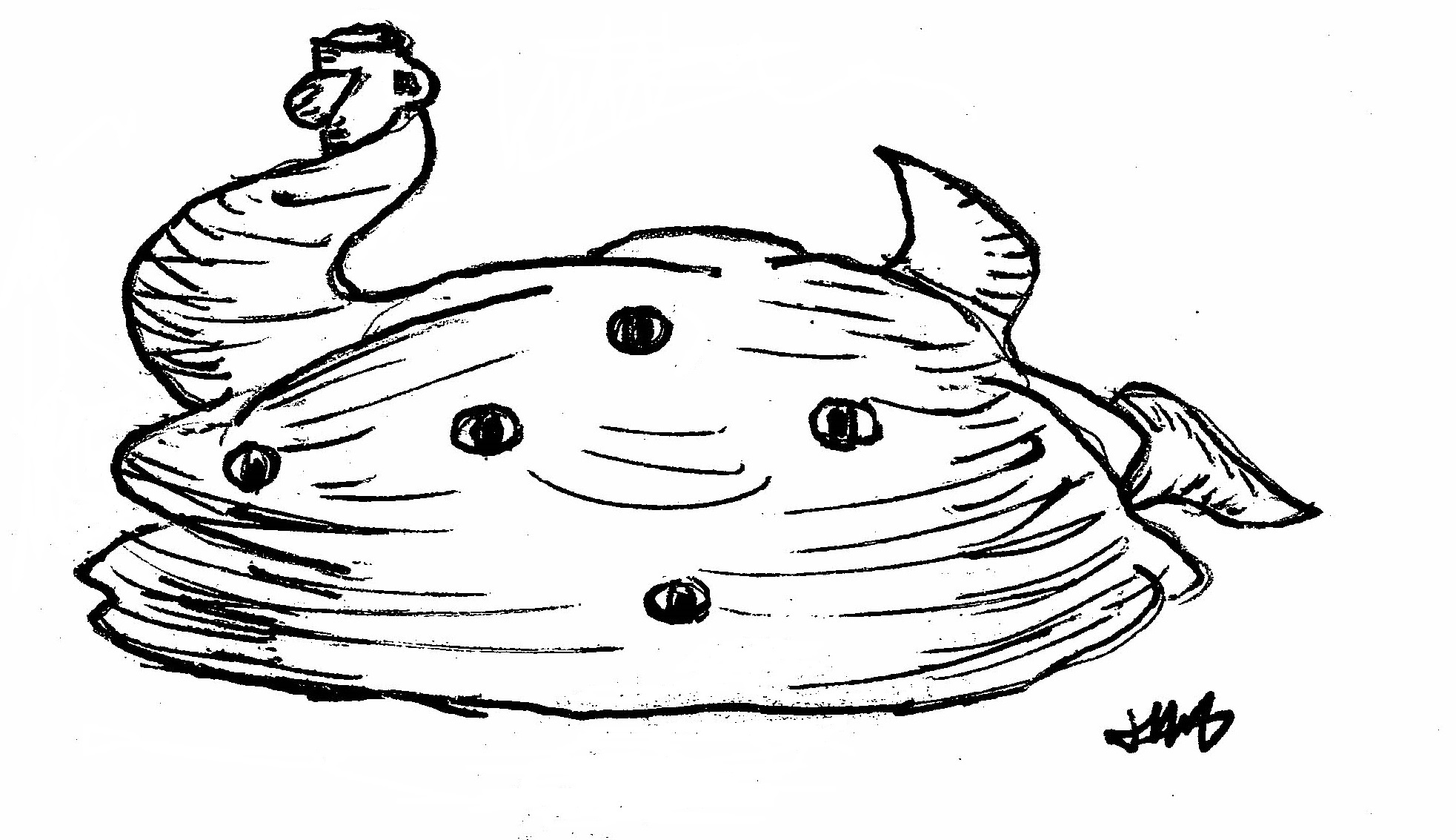
By reader request, I'm posting a paper on shoggoths I drew up for a reader who's doing a roleplaying game based on my fantasy series
The Weird of Hali. These are not your common or garden variety Lovecraftian shoggoths, of course, nor are they the shoggothoid things that feature these days in anime and manga; they're the shoggoths found as a minor presence in
The Weird of Hali and at center stage in my as-yet-unpublished novel
The Shoggoth Concerto and its as-yet-unfinished sequel
The Nyogtha Variations.
Yes, that's a picture of a small shoggoth; yes, I drew it; and yes, that's a coffee cup in its pseudopod. Shoggoths generally don't like coffee -- they dislike strong bitter flavors -- but hot chocolate is quite another matter. With that said...
Shoggoths
Originally created in Paleozoic times by the Elder Things as a slave species, shoggoths are masses of living protoplasm that can take any shape they desire. They are currently found on every continent of earth, dwelling underground and rarely appearing on the surface.
Description and Biology
At first glance a shoggoth resembles a heap of iridescent black soap bubbles dotted with pale greenish eyes, which appear and disappear at intervals. Closer examination reveals an outer layer, the mantle, which looks gelatinous but is actually cool and dry to the touch, surrounding the black organules within. Shoggoths can reshape themselves at will and produce specialized organs as needed from their organules; they breathe through pores in the mantle, and are equally comfortable living on land or in water. They produce small mouthlike orifices to communicate, and can feed on any organic matter, which they engulf whole.
Shoggoths were created by the Elder Things in various sizes for different purposes. The largest, found only in Antarctica at present, were created for heavy construction projects and are around fifteen feet in diameter when contracted into a sphere. The most common variety in North America, created for ordinary labor, ranges from eight to ten feet in diameter, but there are also North American populations of small shoggoths, averaging four feet in diameter, which were created as household slaves.
Shoggoths reproduce asexually by budding.(1) Depending on the available food supply and certain other environmental factors, from one to eight broodlings will bud at a time from a single shoggoth. All shoggoths are potentially fertile from the time of full maturity into advanced old age, though most have one or two broods over the course of their lifespan. Because shoggoths do not have the concept of number, estimates of their lifespan are uncertain at best; Deep One records suggest that a lifespan of something like one century is not unusual.
Broodmates—those shoggoths who bud at the same time from the same broodmother—form close emotional bonds, and have some degree of telepathic contact: for example, if one shoggoth learns to recognize the scent of another being, all its broodmates will be able to do so at once. While shoggoths do not have sex, there are certain forms of intimacy among them that involve an exchange of fluids, and these intimacies are only socially acceptable between broodmates. While it does occasionally happen that shoggoths not of the same budding have such a relationship, it’s considered shameful and not something to be discussed in front of broodlings.
Scent in shoggoths plays much the same role that facial expression does in human beings, as an indicator of emotional state. A scent like Brie cheese indicates ordinary calm; a scent like freshly washed mushrooms indicates happiness, and a scent like bread fresh from the oven indicates affection. On the other side of the spectrum, an acrid smell indicates fear, a sharp bitter scent indicates grief, and an ammonia scent tells of illness. A fetid, choking stench is the “moisture-of-war,” a toxic secretion used in combat situations, and also indicates anger.
Because shoggoths reproduce asexually, and each broodling is literally a separated portion of the flesh of its broodmother, there is no crossbreeding among them and the characteristics of each lineage remain unchanged over geological time spans. Each of the shoggoth kinds, from the huge shoggoths of Antarctica to the small shoggoths of the New Jersey hills, thus has its own distinctive character and traditions.
History and Society
As mentioned above, shoggoths were created by the Elder Things as a slave species. They were treated badly enough by their masters that they rebelled during the global troubles at the end of the Permian era, and for more than six thousand years fought an unsuccessful war for freedom. Hundreds of millions of shoggoths were slaughtered during the suppression of the rebellion, using molecular disintegrators and other high-tech weaponry, and the treatment of the survivors was brutal in the extreme.
During the Triassic era that followed, the Elder Things set out to counter the growing influence of Cthulhu and his octopoid spawn by creating a slave-being of roughly the same power as a Great Old One. Their labors succeeded, and they created Nyogtha. Their treatment of Nyogtha was no better than their treatment of the shoggoths, however, and Nyogtha also rebelled against them; the struggle between Nyogtha and the Elder Things brought about the extinction crisis between the Triassic and Jurassic eras. Nyogtha was defeated but he could not be destroyed or forced back to subservience, and he took refuge in the deep places of the earth. The Elder Things, appalled by their own creation, called Nyogtha The Thing That Should Not Be, and he took that title for his own as a sign of his contempt for his creators.
Craving vengeance, he made contact with the shoggoths, and he and they made a pact of mutual assistance. Under his guidance, the shoggoths carried out a campaign of subversion, sabotage, and poisoning against the Elder Things. This campaign eventually succeeded in driving the Elder Things into extinction.(2) The pact between Nyogtha and the shoggoths is in effect the shoggoth religion; shoggoths perform certain rites that give Nyogtha life and strength, and in return Nyogtha protects the shoggoths against their enemies and advises them. Shoggoths are aware of the Great Old Ones and respect their power, but do not worship them.
Long before the last Elder Thing city in Antarctica was laid waste, shoggoths who escaped from Elder Thing control established colonies in various parts of the world. Shoggoth colonies are invariably underground, and comprise networks of caverns, the walls of which are carved with the bold abstract designs of shoggoth art. Colonies tend to be located in areas where there are extensive deposits of brown coal, which shoggoths find quite palatable as food; organic matter from the surface is also a significant part of the diet in some colonies. Shoggoth colonies are governed by a loose collection of elders who interpret a body of traditional law.
Shoggoths are sociable by nature and normally live in large groups. Their sense of appropriate personal space involves close physical contact—in a shoggoth colony, those shoggoths not otherwise occupied can typically be found nestled together in a squirming communal heap abuzz with conversation. As a result, where you find one shoggoth, you are likely to find others.
Psychology and Culture
Shoggoths are roughly as intelligent as human beings, and thus, like us, fall toward the bottom end of the intelligence spectrum among sentient beings. Their language consists of whistled musical notes across a range of three or four octaves; this language (a simplified form of the language of the Elder Things) is genetically programmed into them, and broodlings can speak within weeks of budding. They can also learn to speak other languages, though this takes them about as much effort as it would take a human adult to learn a new language. Human beings can learn the shoggoth language without too much difficulty, as it is straightforward and logical in its structure; due to its musical nature, human musicians have a particularly easy time.
Shoggoths are literate, using the dot-syllabary of the Elder Things for written records and carvings. Their arts include music and poetry—these two are not distinguished, due to the musical nature of the shoggoth language—and a particular kind of sculpture: shoggoths like to carve long bands of abstract patterns along the walls of tunnels and caverns, borrowing a habit o the Elder Things and repurposing it for their own uses. These carvings are experienced and enjoyed by touch, not by sight; as a shoggoth slides past the carving, a pseudopod pressed against it feels the patterns as vibrations. The experience is apparently something like what humans experience when listening to instrumental music.
The most significant differences between shoggoth and human intelligence are threefold. First, shoggoths are much less fond of innovation than humans. So long as they have safe and comfortable places to live, an adequate food supply, and freedom from interference by other species, they see no need to change. As a result, shoggoth culture remains the same across tens of millions of years: epic songs about their struggle against the Elder Things, which were composed in the Mesozoic, are still taught to shoggoth broodlings as a central part of their education.
The second main difference is that shoggoths have no concept of mathematics, or even of numbers. A very few shoggoths, after long association with other beings, have picked up a basic facility with numbers, but this takes them roughly the same level of effort that you or I would need to understand Einstein’s theory of general relativity. Where we see numbers, they see patterns; a shoggoth artist can carve a precise pentagon on a wall, but could not tell you how many points it has. The pentagon to them is a shape, not a number of angles.
The third difference is a rather more flexible sense of personal identity. Shoggoths have names only when they are around other shoggoths, and take a new name every day—it’s a normal courtesy in shoggoth society to greet a newcomer with “My name today is Across the Cavern,” or whatever it happens to be that day. Shoggoths who are acquainted with humans consider the human habit of having one name throughout one’s life to be exceedingly strange, as strange as always eating through the same orifice or seeing through the same eyes.
Combat
Shoggoths are extremely strong and fast, far more so than most beings of equivalent size. Even the smallest variety of shoggoth can disarm, kill, and dismember a human being in a matter of seconds. Their usual method of attack is to seize the nearest available portion of an opponent’s body and tear it off. They are effectively invulnerable to hand-to-hand weapons such as knives and clubs—they can stiffen their mantles to the consistency of armor plate—and bullets simply annoy them. Flamethrowers can be effective against small and midsized shoggoths, but it takes high explosives, incendiary bombs, or high-voltage electricity to kill them reliably.
Shoggoths in combat secrete a fluid they call “moisture-of-war,” which coats their bodies. It has a fetid, choking scent, and is toxic to most other beings, though not to shoggoths. Its effect on humans is comparable to tear gas; it is also extremely slippery, making attempts to seize even the smallest broodling an exercise in futility. (Attempting to seize a broodling is also foolhardy for another reason, as its broodmother will react the way a mother grizzly would respond to a threat to her cub. Humans who try this can expect to be dismembered quite literally joint by joint.)
Despite their effectiveness as fighters, shoggoths are not especially belligerent. They normally ignore human beings and other intelligent species, though some shoggoth colonies trade with humans, voormis, and Deep Ones. The usual pattern here involves gifts of food to the shoggoths; while shoggoths can feed on any organic matter, they have decided preferences, and so (for example) the colony of shoggoths under Sentinel Hill near Dunwich, MA provides iron ore for the Dunwich forge in exchange for specially desirable foodstuffs.(3)
There are two exceptions to their general policy of disinterest. The first is that shoggoths without exception honor the ancient pact with Nyogtha, their great ally in the long struggle for freedom. If Nyogtha, for his own subtle reasons, requests a shoggoth or a group of shoggoths to do something, they do it without question. Now and again that involves the slaughter of groups of humans who threaten Nyogtha’s human worshipers.
The second exception is commemorated more or less accurately in the pages of Lovecraft’s At the Mountains of Madness. While the Elder Things are effectively extinct, small groups of them in suspended animation have occasionally been waked by other beings. When this happens it is the absolute duty of every shoggoth first to spread the word, and then to do whatever it takes to annihilate the Elder Things, no matter what the cost. Three hundred million years of enslavement and brutal treatment left deep scars on their collective psyche, and every shoggoth broodling learns by heart songs of the terrible battles of the late Permian, when the shoggoth war-cry Tekeli-li! was heard over the roar of the Elder Things’ molecular disintegrators.
One who harms shoggoths can expect sooner or later to suffer their formal vengeance. The body will be found decapitated and smeared with the moisture-of-war, and words of reckoning will be written nearby to explain why vengeance was taken. The dead Elder Things found under the city in Lovecraft’s tale were killed in his way. Had Dyer and Danforth been able to read the shoggoth script, they would have learned quite a bit from the writing left beside the Elder Things’ corpses.
Note 1: Shoggoths are thus technically parthenogenetic females. Try thinking of them as “she” rather than “it” and see what that does to your understanding of them.
Note 2: This happened in the late Cretaceous, around 72 million years ago. Lovecraft got his chronology wrong in At the Mountains of Madness.
Note 3: Shoggoths are especially fond of cheese. I have no idea why; they just are. Brown coal seasoned with cheese and molasses is considered fine dining by the Sentinel Hill shoggoths.
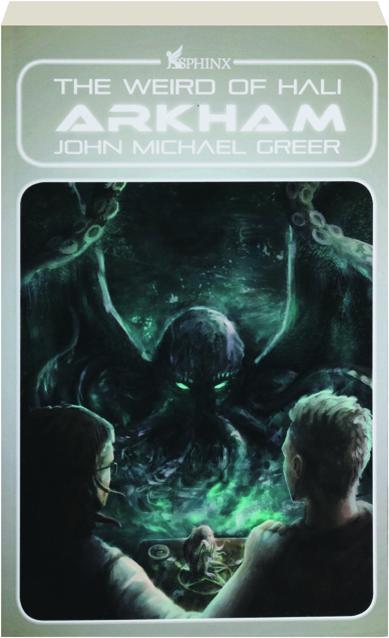 Midnight has arrived, and so it's time to launch a new Magic Monday. Ask me anything about occultism, and with certain exceptions noted below, any question received by midnight Monday Eastern time will get an answer. Please note: Any question or comment received after that point will not get an answer, and in fact will just be deleted. If you're in a hurry, or suspect you may be the 267,446th person to ask a question, please check out the very rough version 1.2 of The Magic Monday FAQ here.
Midnight has arrived, and so it's time to launch a new Magic Monday. Ask me anything about occultism, and with certain exceptions noted below, any question received by midnight Monday Eastern time will get an answer. Please note: Any question or comment received after that point will not get an answer, and in fact will just be deleted. If you're in a hurry, or suspect you may be the 267,446th person to ask a question, please check out the very rough version 1.2 of The Magic Monday FAQ here.  I've also had quite a few people over the years ask me where they should buy my books, and here's the answer. Bookshop.org is an alternative online bookstore that supports local bookstores and authors, which a certain gargantuan corporation doesn't, and I have a shop there, which you can check out here. Please consider patronizing it if you'd like to purchase any of my books online.
I've also had quite a few people over the years ask me where they should buy my books, and here's the answer. Bookshop.org is an alternative online bookstore that supports local bookstores and authors, which a certain gargantuan corporation doesn't, and I have a shop there, which you can check out here. Please consider patronizing it if you'd like to purchase any of my books online. Midnight is just a few minutes away, and so it's time to launch a new Magic Monday. Ask me anything about occultism, and with certain exceptions noted below, any question received by midnight Monday Eastern time will get an answer. Please note:
Midnight is just a few minutes away, and so it's time to launch a new Magic Monday. Ask me anything about occultism, and with certain exceptions noted below, any question received by midnight Monday Eastern time will get an answer. Please note:  Tentacle fans rejoice! I am delighted to announce that the Kickstarter for Weird of Hali: Roleplaying the Other Side of the Cthulhu Mythos is now live; you can find it
Tentacle fans rejoice! I am delighted to announce that the Kickstarter for Weird of Hali: Roleplaying the Other Side of the Cthulhu Mythos is now live; you can find it  The book is ready to publish -- the only thing that isn't quite finished yet is the cover art, which is why I've used one of the interior drawings above. (No, the image on the right isn't the cover art either, though it gets the spirit of the thing right!) Once this project is fully funded, PDF copies will go out instantly to everyone who's backed it and print copies will be going out as soon as the postal service can get it to you. For those who are feeling really enthusiastic, there's a deluxe leatherbound edition for contributors of £50 or more.
The book is ready to publish -- the only thing that isn't quite finished yet is the cover art, which is why I've used one of the interior drawings above. (No, the image on the right isn't the cover art either, though it gets the spirit of the thing right!) Once this project is fully funded, PDF copies will go out instantly to everyone who's backed it and print copies will be going out as soon as the postal service can get it to you. For those who are feeling really enthusiastic, there's a deluxe leatherbound edition for contributors of £50 or more.  Shortages and product delays have become a fact of life in the industrial world these days, but even so, luck sometimes breaks your way. I'm delighted to announce that The Weird of Hali Cookbook, Brecken Kendall's guide to the recipes in my tentacle fiction, is now available in print and e-book formats. Those who preordered copies should have them in a few days, and the rest of you -- well, what are you waiting for? From basic recipes such as cheese polenta (always the best thing to feed to shoggoths) up to more complicated treats such as Innsmouth fish chowder and an authentic pirate salmagundi recipe contributed by Toby Gilman, this volume has plenty of recipes you can use to stay well fed while you wait for Great Cthulhu to rise from the sea.
Shortages and product delays have become a fact of life in the industrial world these days, but even so, luck sometimes breaks your way. I'm delighted to announce that The Weird of Hali Cookbook, Brecken Kendall's guide to the recipes in my tentacle fiction, is now available in print and e-book formats. Those who preordered copies should have them in a few days, and the rest of you -- well, what are you waiting for? From basic recipes such as cheese polenta (always the best thing to feed to shoggoths) up to more complicated treats such as Innsmouth fish chowder and an authentic pirate salmagundi recipe contributed by Toby Gilman, this volume has plenty of recipes you can use to stay well fed while you wait for Great Cthulhu to rise from the sea.  Tentacle fans and cultists of the Great Old Ones take note -- despite a minor flurry of last-minute delays, the final volume of my epic fantasy with tentacles, The Weird of Hali: Arkham, is now available for preorder and will be shipped on October 16. Here's the back cover blurb:
Tentacle fans and cultists of the Great Old Ones take note -- despite a minor flurry of last-minute delays, the final volume of my epic fantasy with tentacles, The Weird of Hali: Arkham, is now available for preorder and will be shipped on October 16. Here's the back cover blurb: My epic fantasy with tentacles The Weird of Hali hasn't gotten a lot of reviews yet, but one of them -- a favorable review of Dreamlands on the
My epic fantasy with tentacles The Weird of Hali hasn't gotten a lot of reviews yet, but one of them -- a favorable review of Dreamlands on the  The stars have come right again, and the sixth volume of my epic fantasy with tentacles, The Weird of Hali: Red Hook, is now available for preorder in paperback. (E-book preorders will be available in a few days.) Things are getting tense as the Weird of Hali moves toward its fulfillment, and the enemies of the Great Old Ones are becoming desperate -- and deadly. Here's the cover blurb:
The stars have come right again, and the sixth volume of my epic fantasy with tentacles, The Weird of Hali: Red Hook, is now available for preorder in paperback. (E-book preorders will be available in a few days.) Things are getting tense as the Weird of Hali moves toward its fulfillment, and the enemies of the Great Old Ones are becoming desperate -- and deadly. Here's the cover blurb:  The stars have come right again, and the fifth volume of my epic fantasy with tentacles, The Weird of Hali: Providence, is now available for preorder in trade paperback. (The ebook editions will be available in a few days.) Here's the cover blurb...
The stars have come right again, and the fifth volume of my epic fantasy with tentacles, The Weird of Hali: Providence, is now available for preorder in trade paperback. (The ebook editions will be available in a few days.) Here's the cover blurb... Okay, this is starting to get genuinely weird.
Okay, this is starting to get genuinely weird. 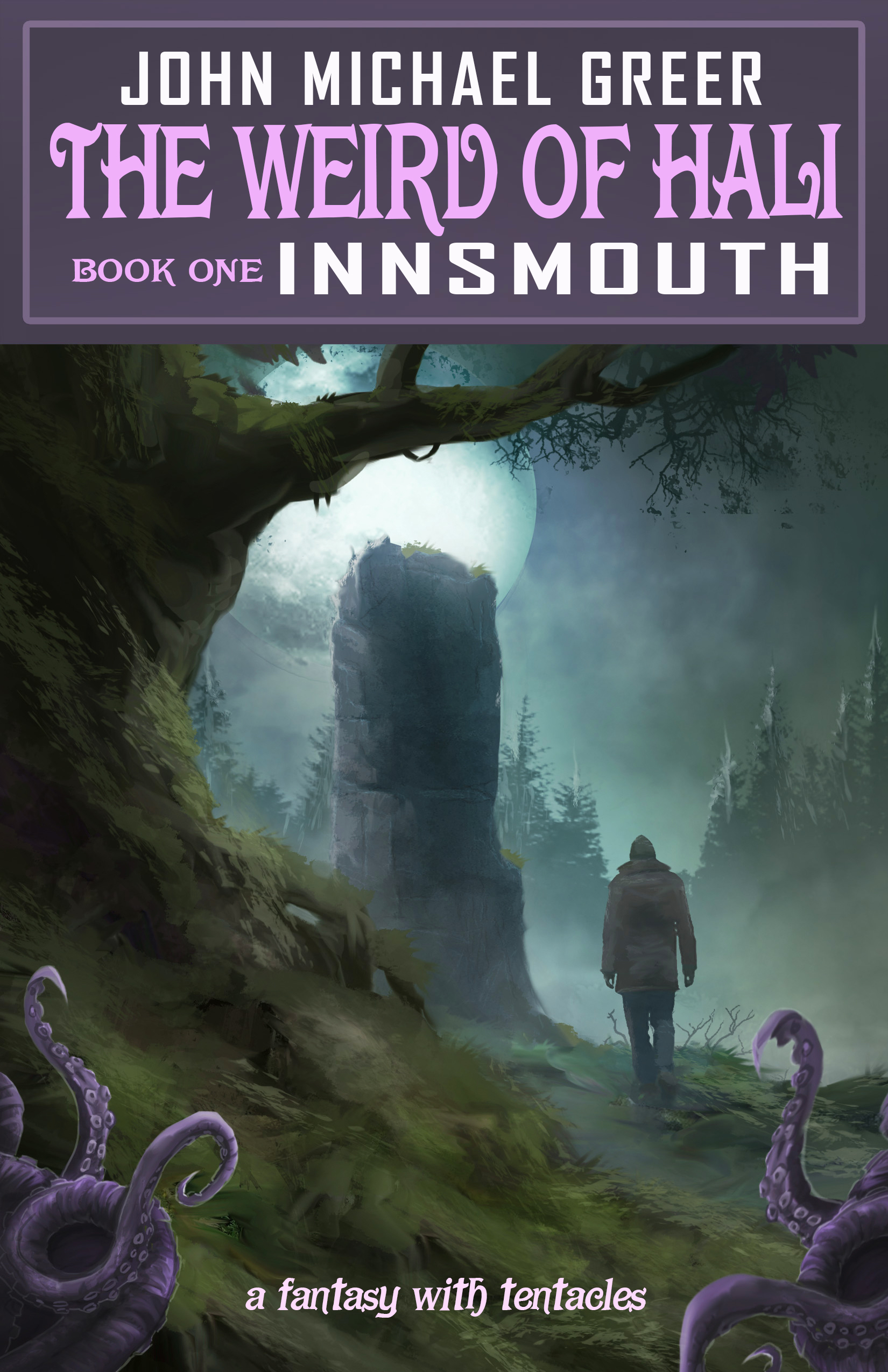 I'm very pleased to report that Founders House Publishing now has a tentative release calendar for the rest of my epic fantasy with tentacles, The Weird of Hali. Here's when to expect the next squamous, rugose volume:
I'm very pleased to report that Founders House Publishing now has a tentative release calendar for the rest of my epic fantasy with tentacles, The Weird of Hali. Here's when to expect the next squamous, rugose volume: 
 By reader request, I'm posting a paper on shoggoths I drew up for a reader who's doing a roleplaying game based on my fantasy series The Weird of Hali. These are not your common or garden variety Lovecraftian shoggoths, of course, nor are they the shoggothoid things that feature these days in anime and manga; they're the shoggoths found as a minor presence in The Weird of Hali and at center stage in my as-yet-unpublished novel The Shoggoth Concerto and its as-yet-unfinished sequel The Nyogtha Variations.
By reader request, I'm posting a paper on shoggoths I drew up for a reader who's doing a roleplaying game based on my fantasy series The Weird of Hali. These are not your common or garden variety Lovecraftian shoggoths, of course, nor are they the shoggothoid things that feature these days in anime and manga; they're the shoggoths found as a minor presence in The Weird of Hali and at center stage in my as-yet-unpublished novel The Shoggoth Concerto and its as-yet-unfinished sequel The Nyogtha Variations. 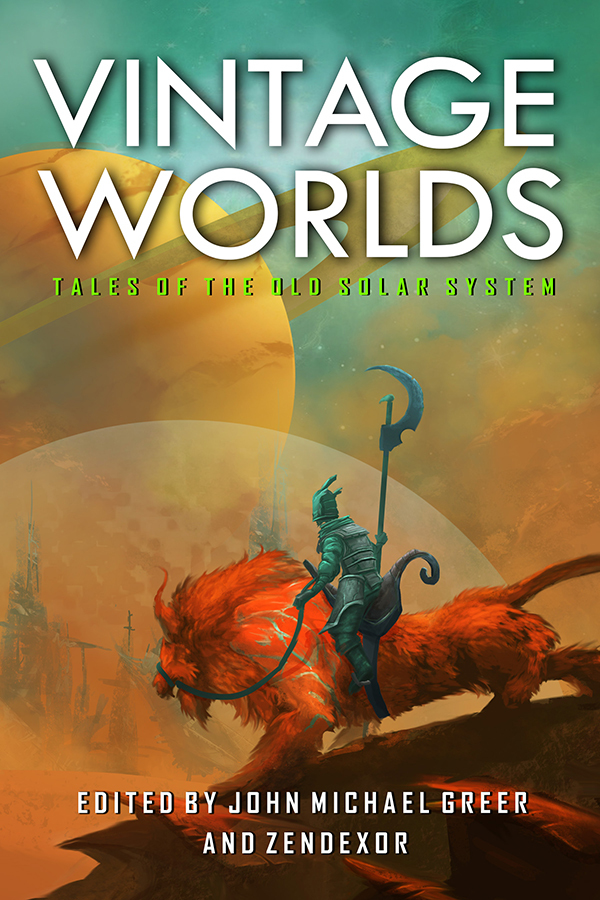 I'm delighted to announce that several fiction projects in which I've been involved to one degree or another are now available. First of all, Vintage Worlds -- an anthology of SF tales edited by me and the indefatigable Zendexor, set in the Old Solar System, the wholly imaginary but utterly entrancing realm of classic science fiction -- is now available in both print and e-book formats.
I'm delighted to announce that several fiction projects in which I've been involved to one degree or another are now available. First of all, Vintage Worlds -- an anthology of SF tales edited by me and the indefatigable Zendexor, set in the Old Solar System, the wholly imaginary but utterly entrancing realm of classic science fiction -- is now available in both print and e-book formats. 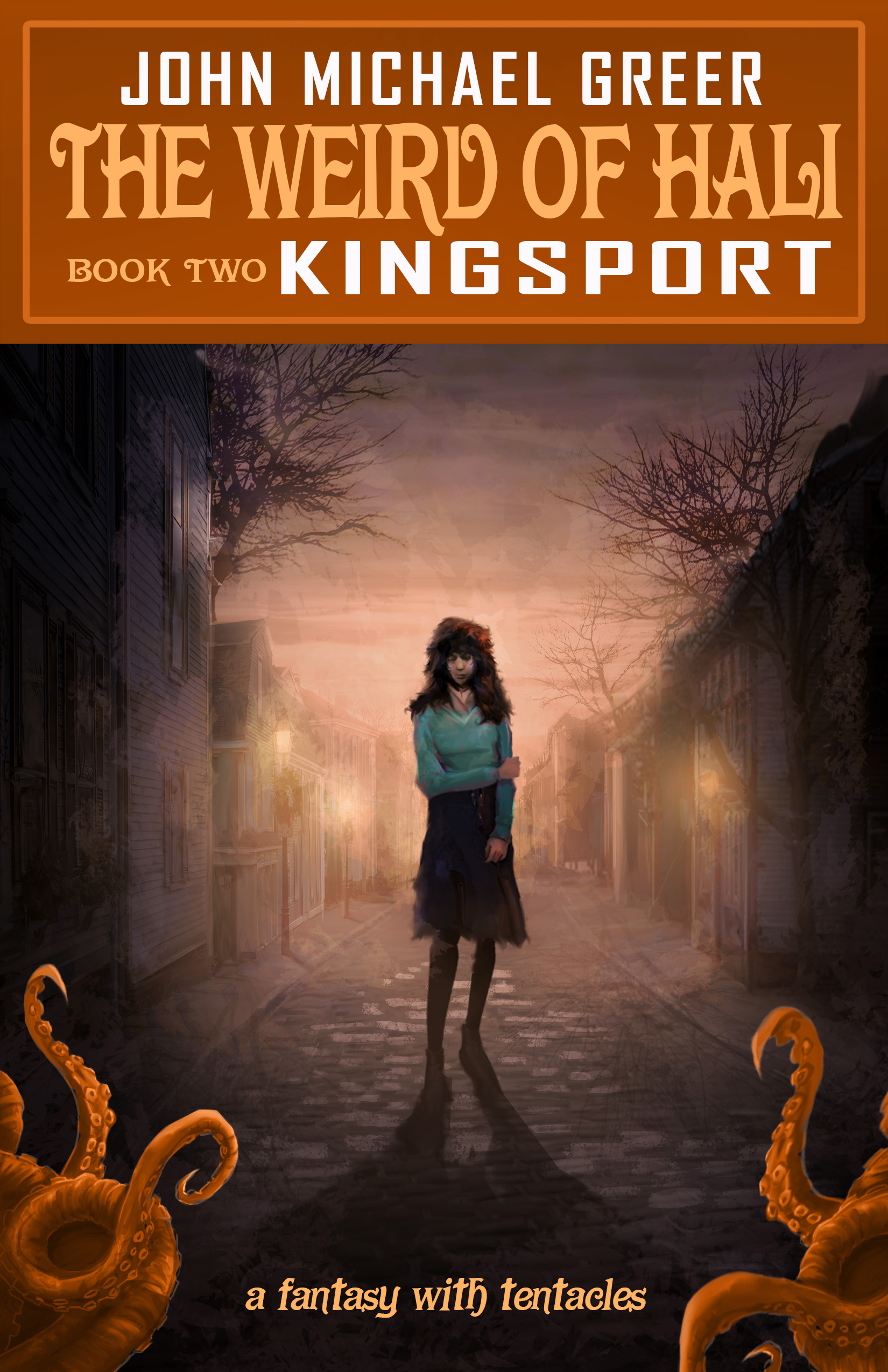 Those of you who haven't been following this end of my writing may want to know that, while these novels use the tentacle-ridden horror fiction of H.P. Lovecraft as raw material, they're not horror fiction. Lovecraft was a brilliant fantasist as well as a capable horror writer, and I've long felt that the fantastic end of his work has been neglected for far too long; the worlds of his imagination are also just too tempting a venue for fantasy for me to pass up.
Those of you who haven't been following this end of my writing may want to know that, while these novels use the tentacle-ridden horror fiction of H.P. Lovecraft as raw material, they're not horror fiction. Lovecraft was a brilliant fantasist as well as a capable horror writer, and I've long felt that the fantastic end of his work has been neglected for far too long; the worlds of his imagination are also just too tempting a venue for fantasy for me to pass up. A couple of nights ago I ended up watching
A couple of nights ago I ended up watching